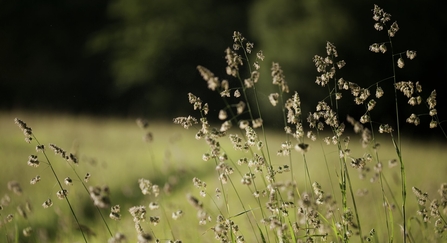What is it?
An herbal ley is a multi-species sward with a mix of grasses, legumes, and forage herbs.
Benefits to farmers:
- The varied species mix provides a varied root structure with some very deep rooted species. This improves soil health and structure which increases drainage channels and also allows plants to access the lower water table in times of drought.
- The diverse mix of plants in an herbal ley provide an excellent diet for livestock, allowing them to forage based on their nutritional needs.
- A high legume content will help to put nitrogen into the soil and decrease the need for additional fertilisers on the ley and on following crops.
- A diverse mix can help to reduce weed problems and can even help with black grass control.
Benefits to wildlife:
- Increase in drainage means less surface run off of soil and nutrients which improves water quality in nearby waterways.
- The increased diversity of plants and the inclusion of flowering herbs provide food sources and habitat for pollinators, birds and many other species.
- An improvement in soil health increases the number and diversity of microarthropods and earth worms.
Points to consider:
- Choosing the right mix of species for your soil type and your grazing/silage needs is important.
- Some seed mixes should have added rhizobia to help them thrive as these plant specific microbes may be missing from your soil if that species has not grown there previously.
- Over time grasses can become dominant and your herbal ley may need to be reseeded after approximately 3-5 years.
Useful resources:

Cocksfoot {Dactylis glomerata} growing in hay meadow - Ross Hoddinott/2020VISION
